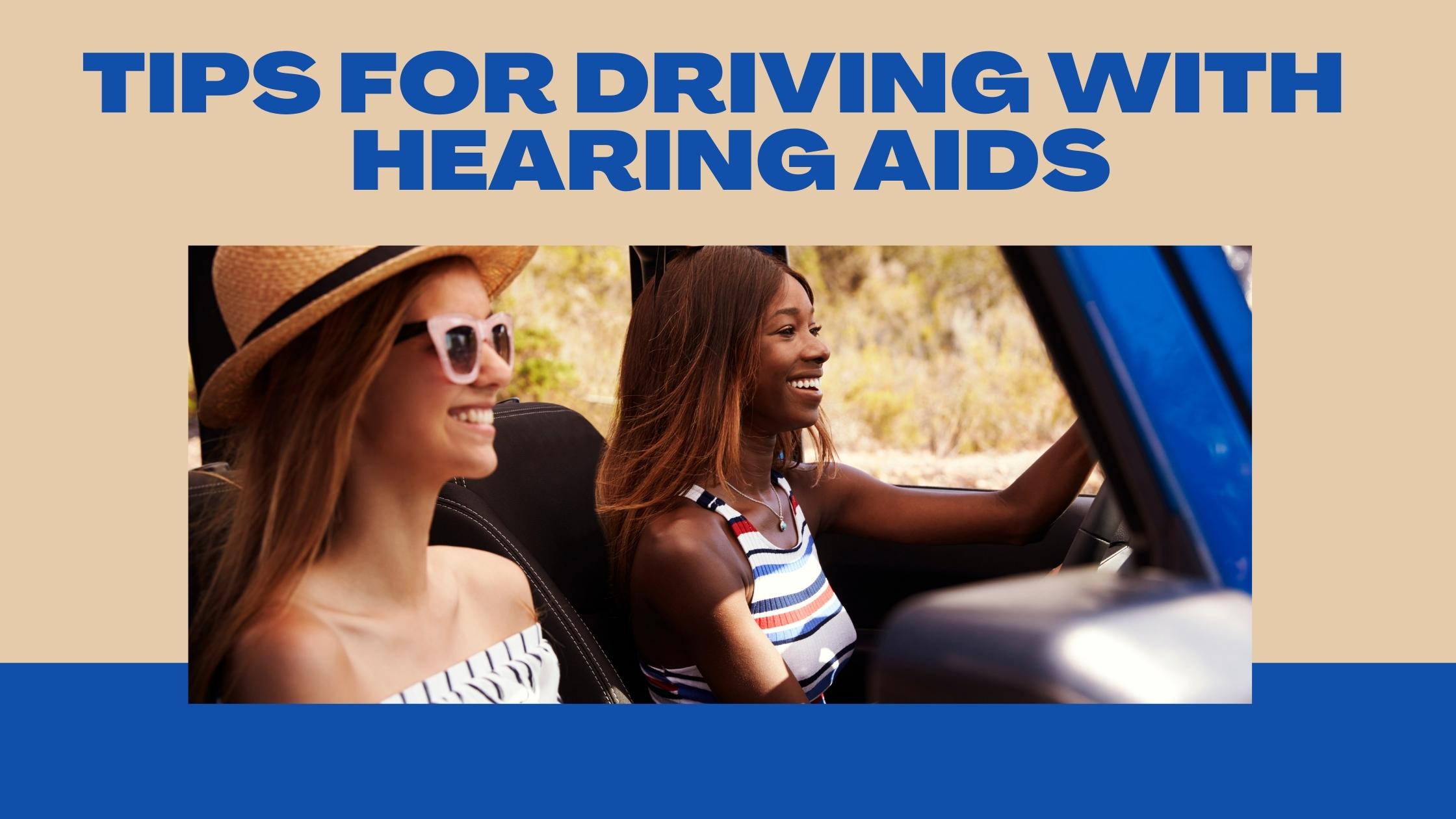It’s unlikely that if you found yourself in your car without the eyeglasses you need, that you’d decide to drive anyways. After you’ve adjusted to your hearing aids and the markedly better hearing experience, you’ll never drive without hearing aids again.
We often think about sight as the most important sensory aid while driving. It’s obviously extremely important to successfully navigate the road. But, hearing loss can impair driving safety, too, particularly if your difficulty hearing appeared in your later years. Hearing aids can help, but there are a few things to keep in mind when you hit the highway.
Wear your hearing aids
If you are in the salad days of your hearing aid adjustment period, they may seem uncomfortable. You’ve become accustomed to your current levels of hearing and you want to take your time getting used to your new hearing life with hearing aids before you aid them into the driving mix.
However, it’s actually been demonstrated that the strain of listening with hearing loss is actually an incredible distraction. It takes a lot of effort for your brain to try and hear and process sound information from deteriorated auditory signals. Meaning, if your brain is used to receiving more sound information, it will struggle to fill in the blanks when that healthy level of sound is interrupted due to hearing loss. This strain actually interrupts your other cognitive tasks, like the ones necessary for driving, by diverting attention to your listening centers.
Have patience with yourself as you adjust to your new hearing aids. Although the temptation to take them out might rise up, try to stick with them. Humans are remarkably adaptable and you’ll eventually feel more comfortable with your hearing aids than without.
Check for charged batteries
Before you get in the car, make sure that your hearing aid batteries are fully charged, or at least have enough power to last you through your errand. Unfortunately, you can’t recharge hearing aid batteries at a gas station as easily as filling up your tank.
Eliminate conversational distractions
Hearing aids might have been the technology you needed to return to easy conversations with friends and family. That’s great! But, engaging in conversations while you’re driving can be a distraction. If your hearing aids make it difficult to tune out conversation around you, ask the passengers in your car for their assistance in making it a safer ride for everyone.
Wait until you’re stopped to make a phone call
You’ve got bluetooth connectivity with your hearing aids, so why wait to place the call? It’s not just passenger conversation that can be distracting, phone conversations can also steal your attention when you need it the most.
Connecting to your phone call via the bluetooth capability of your hearing aids can also mean turning off your ability to hear environmental sounds. On the road, noises like horns honking or sirens can be important signals that you need to pay attention to.
Pay extra attention to visual cues
Although you invested in two hearing aids, there is still the chance that your ability to use your hearing to locate where sounds are coming from isn’t at one hundred percent. In a largely unconscious process, our brain measures the loudness of sounds and compares the level of noise from one ear to the other in order to pinpoint location.
Because you can’t count on this process as accurate, it could even provide you with mistaken information. You’ll need to pay extra attention to the activity and environment you can visually perceive. Keep your eyes on the road at all times and regularly check your rearview and side mirrors.
Practice care and maintenance of hearing aids
Schedule regular appointments for maintenance of your hearing aids. While they can greatly enhance your hearing experience, faulty hearing aids can add more distraction onto driving if they are buzzing, whistling or giving off feedback.
You can extend the life of your hearing aids and ensure that they are working at tip top shape by taking care to regularly clean them. Make sure they are free of moisture at night by wiping them down with a soft cloth and store in a dry place while you sleep.

